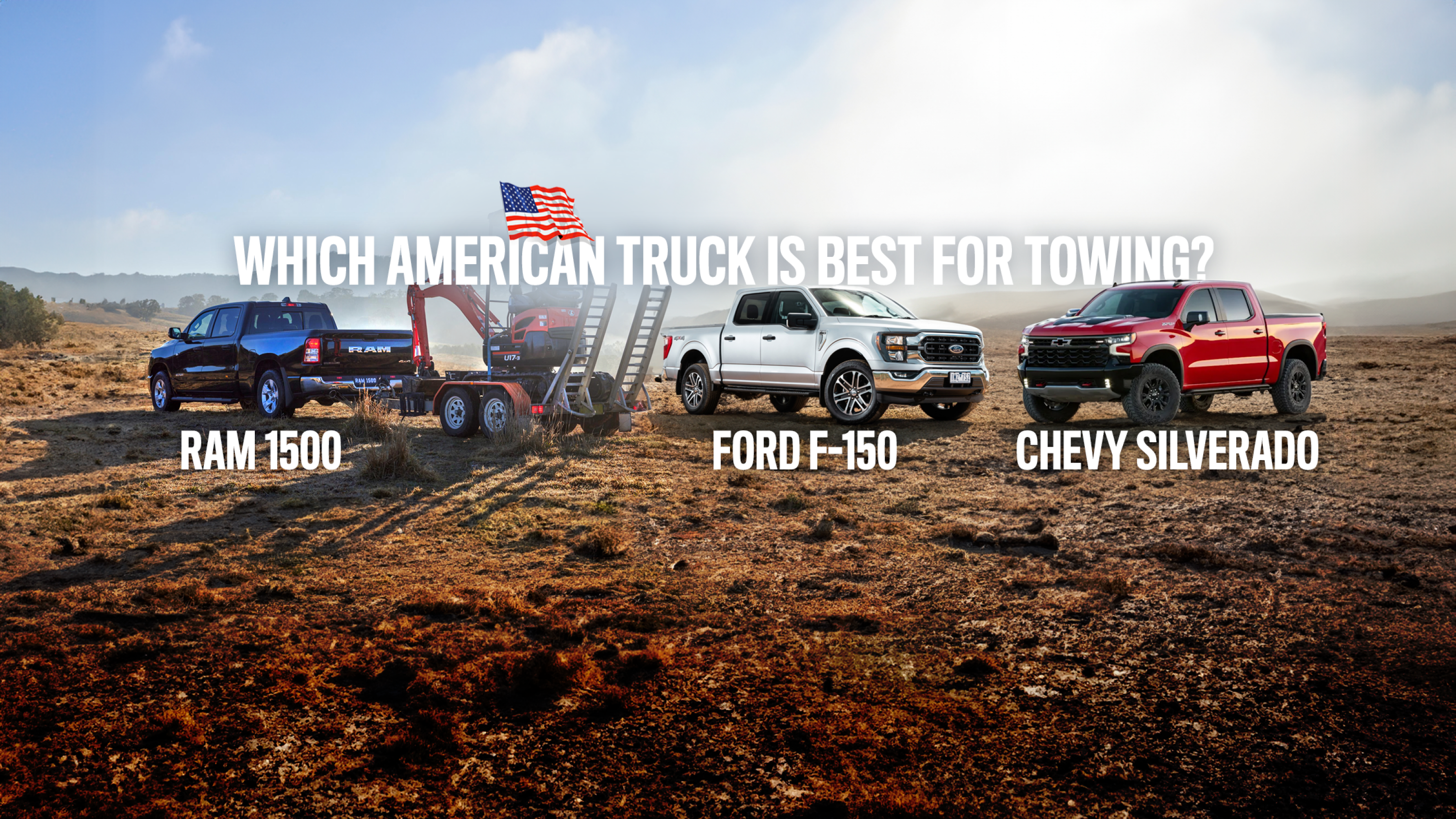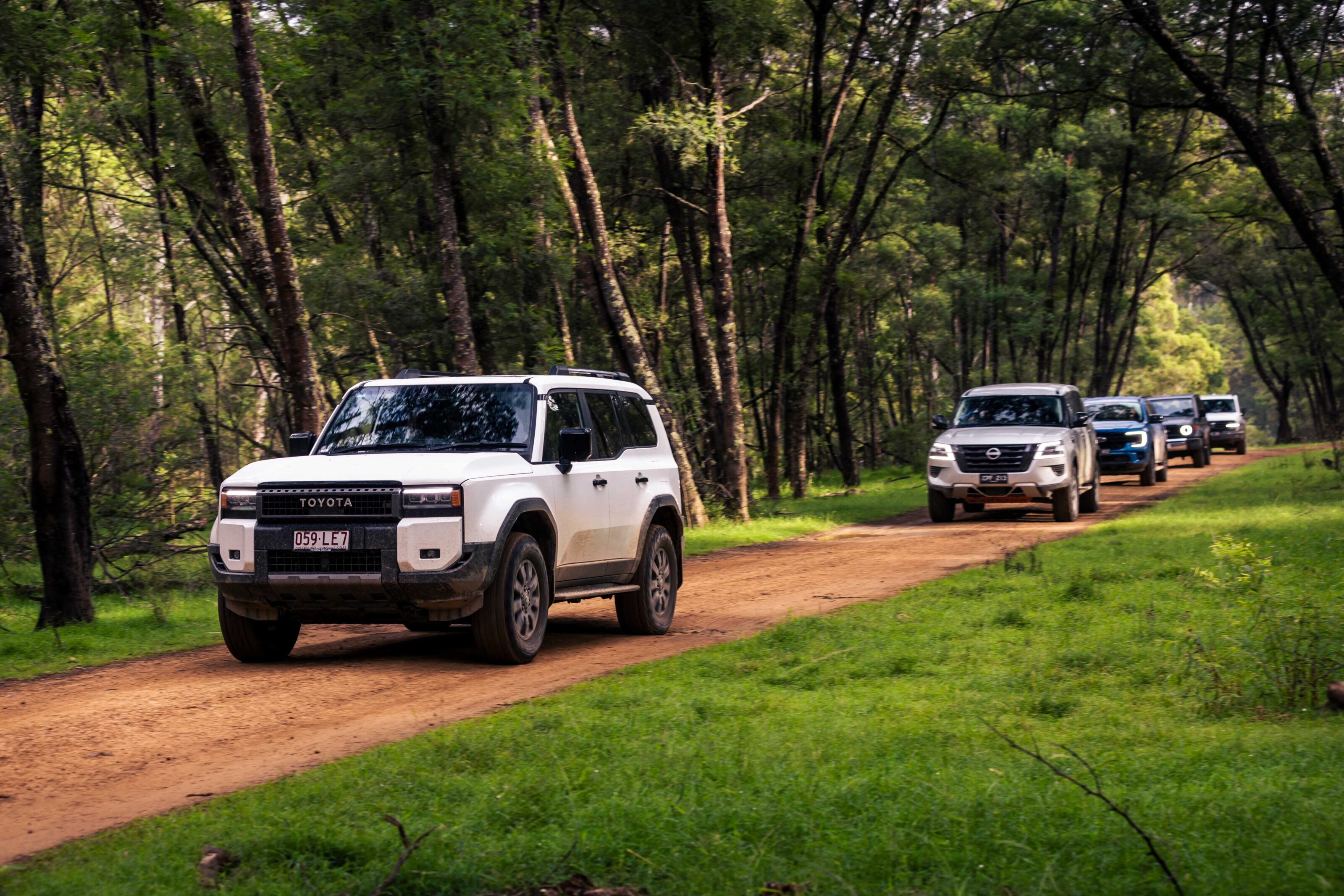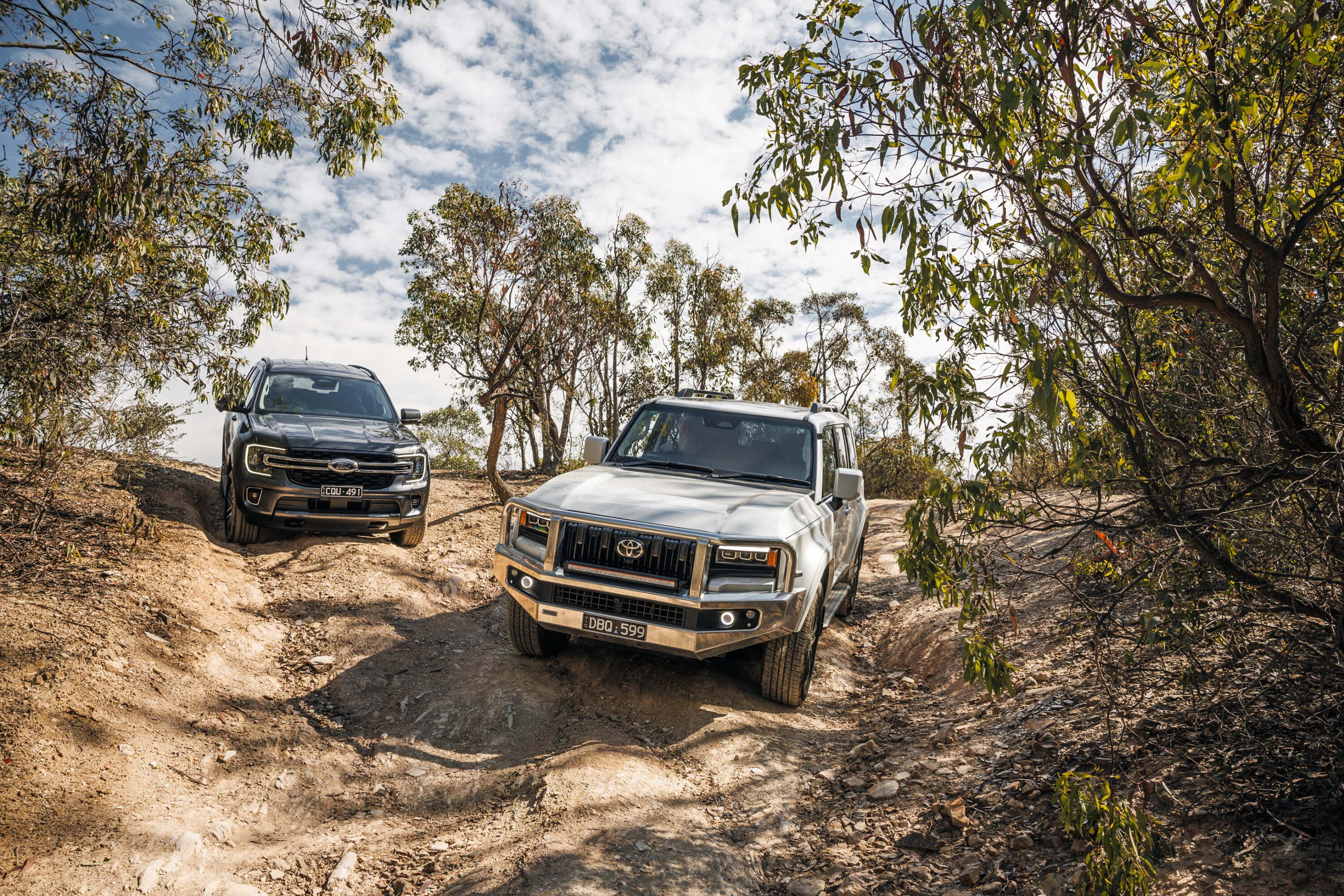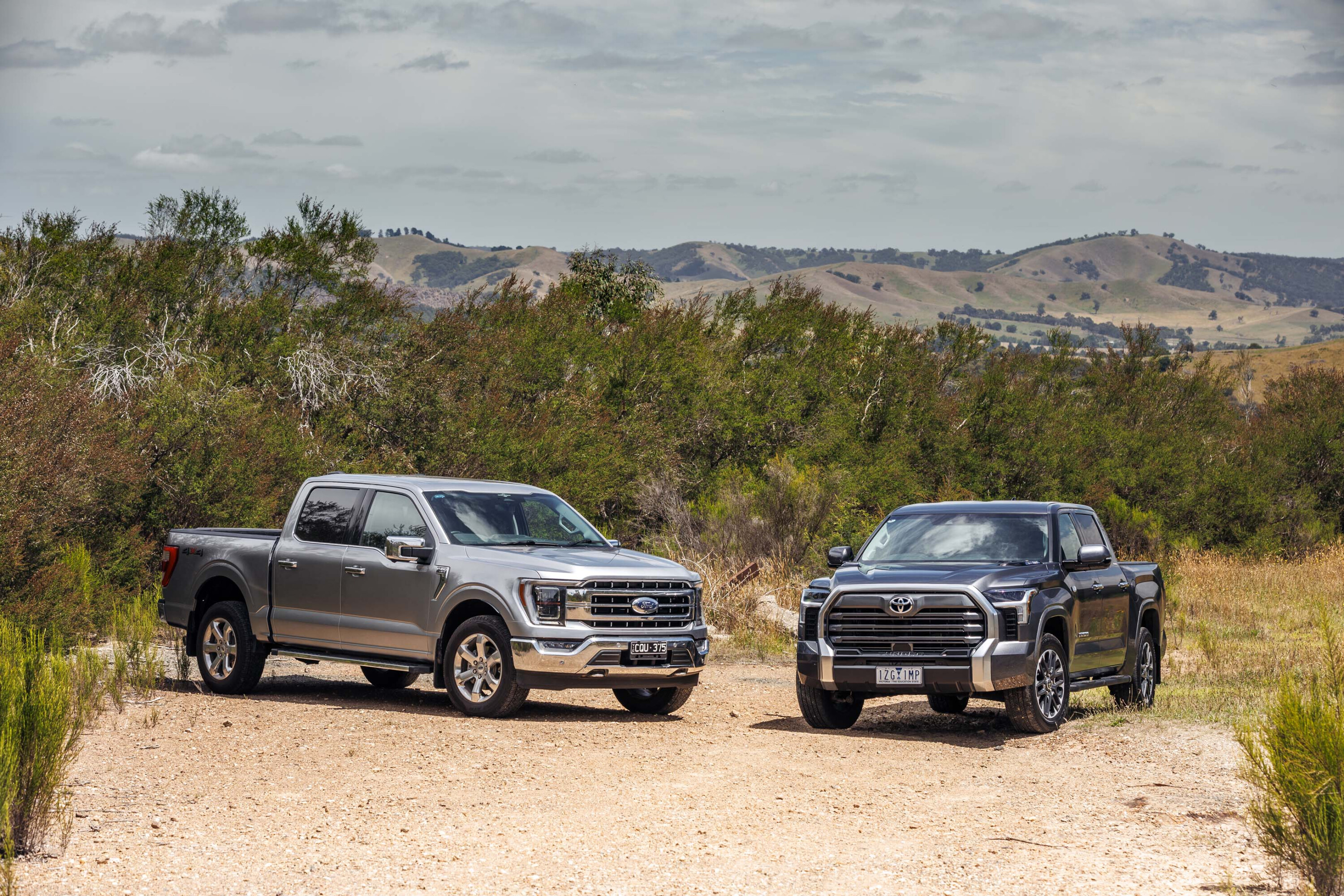Big utes are becoming big business in Australia and if you’re currently in the market for one, chances are you’re planning to use it for towing.
Being able to tow massive loads is a huge part of the appeal of buying a full-size US pickup and the Ram 1500, Chevrolet Silverado and newly arrived Ford F-150 all boast braked towing capacities of 4500kg.
That’s a full tonne more than popular 4×4 dual-cabs like the Ford Ranger and Toyota HiLux and it’s just the tip of the iceberg.
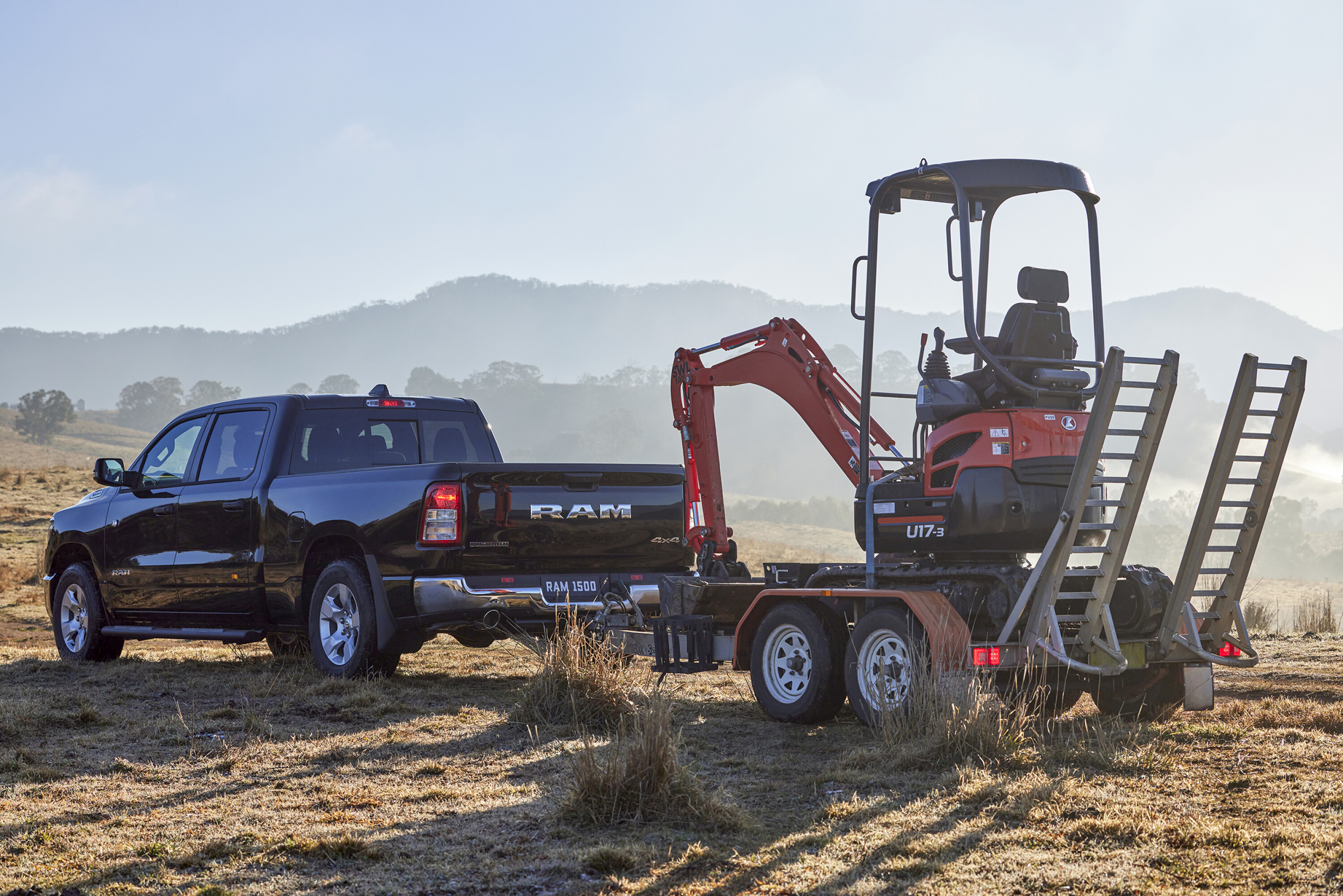
If you need to haul even bigger loads, the larger ‘heavy duty’ versions of US pickups like the Ram 2500 and 3500 carry braked towing capacities of 8000kg if fitted with a gooseneck hitch and air brakes.
But buyer beware: not every tow rating is created equal.
While two utes might have the same maximum braked figure, there are other crucial figures to consider like payload, gross vehicle mass (GVM) and tow ball mass (TBM) that can make a huge difference when it comes time to load up your tow rig.
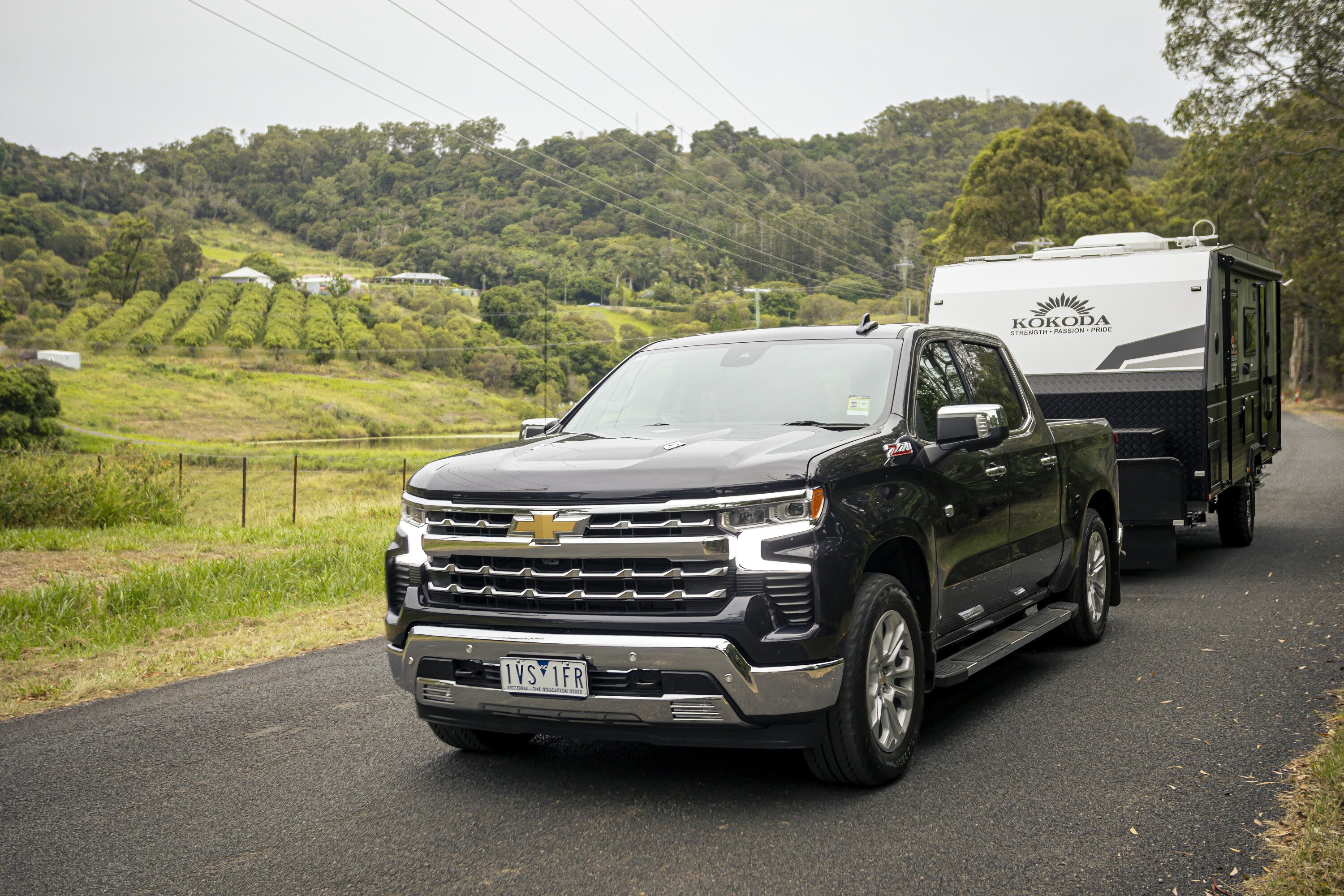
And once you take these into account, US pickups might have more towing limitations than you think.
In fact, when it comes to payload – how much stuff you can chuck in your ute – they actually struggle to better smaller dual-cabs like the Ranger and HiLux.
Check out the table below to see how they stack up while towing 4500kg and 3000kg.
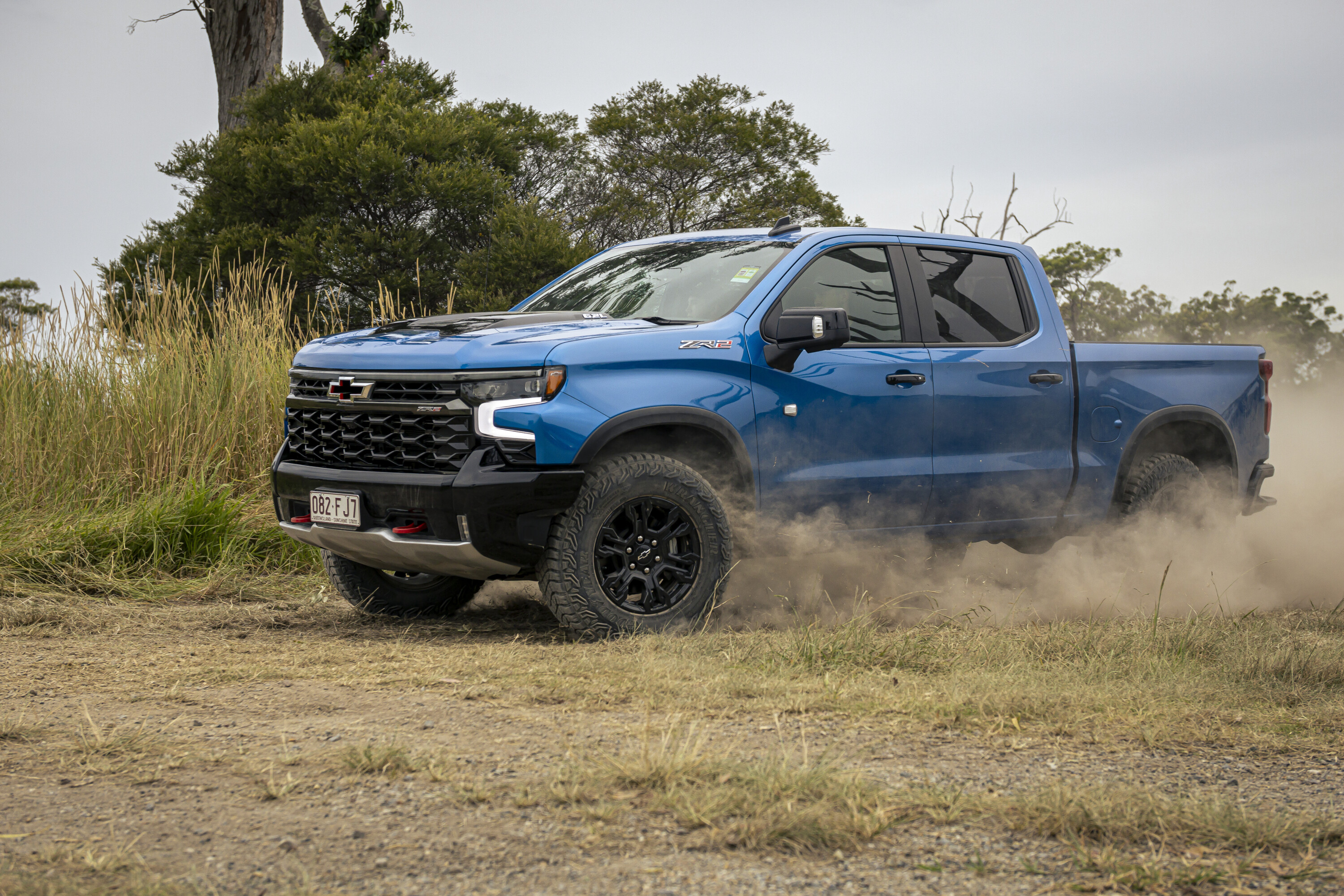
For this comparison, we’ve focused on the Ford F-150, Ram 1500 and Chevrolet Silverado as they’re easily the most popular versions of full-size US pickups.
The 1500 class can also be driven on a regular car licence and doesn’t require a light truck licence like some larger utes do.
So which of this trio is best for towing? As you’ll discover, it pays to crunch the numbers. Let’s dive in.
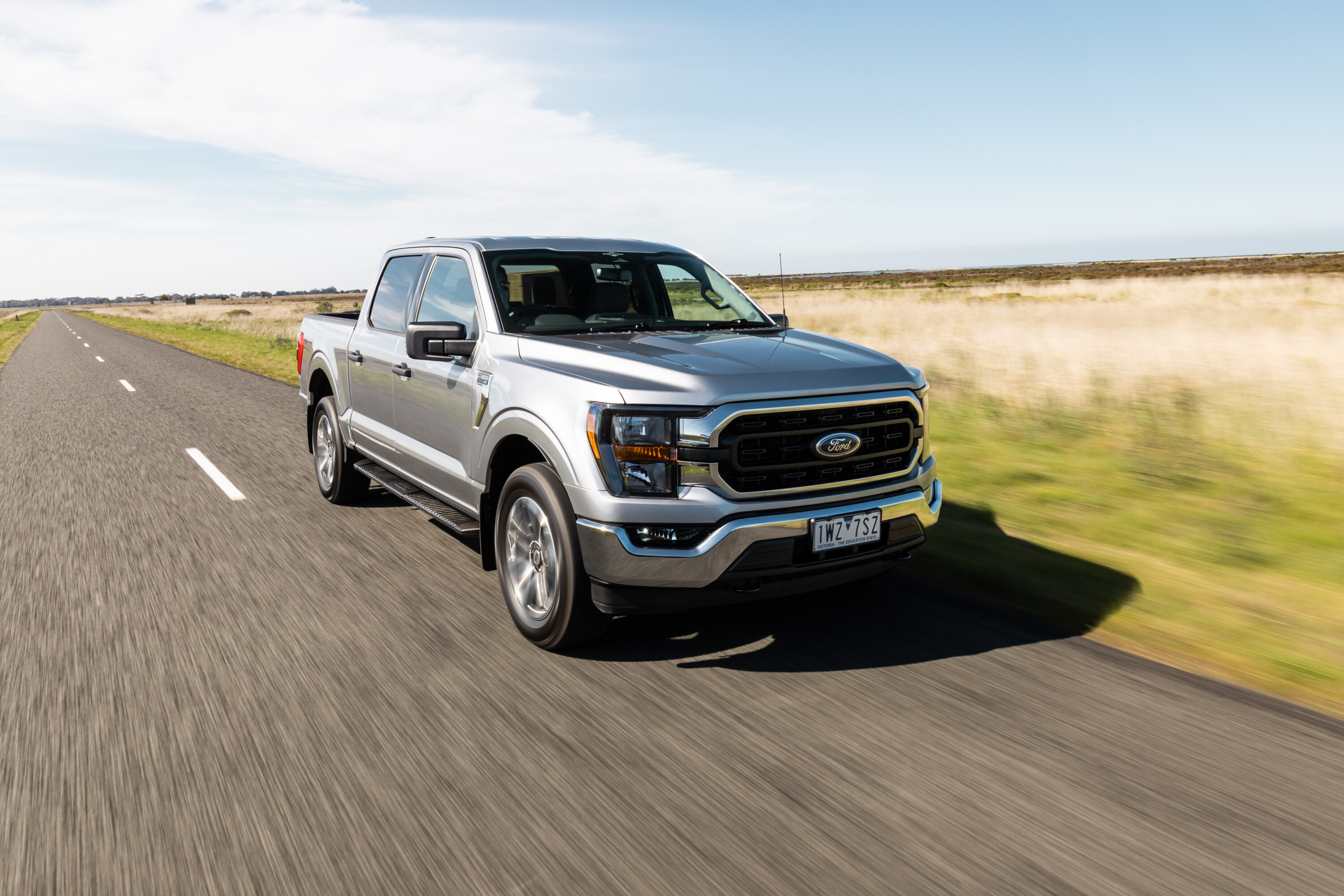
Tow ratings, payload and other crucial weights
WINNER: Ram 1500 Big Horn
WEAKEST: Chevrolet Silverado ZR2
It’s easy to fixate on a ute’s braked towing capacity – it’s the big number championed in TV ads and in the brochure – but payload is just as important.
For a detailed explainer of everything you need to know about towing weights, read our story below.
Payload refers to the amount your ute can legally carry and it’s one of the most critical figures to be aware of when towing.
You see, while all three of these utes can tow 4500kg, their maximum payloads while towing vary wildly. In a Ford F-150 XLT short wheelbase, for example, you can only throw 319kg worth of people/stuff/accessories into your ute while towing 4500kg before you’re overweight and driving illegally.
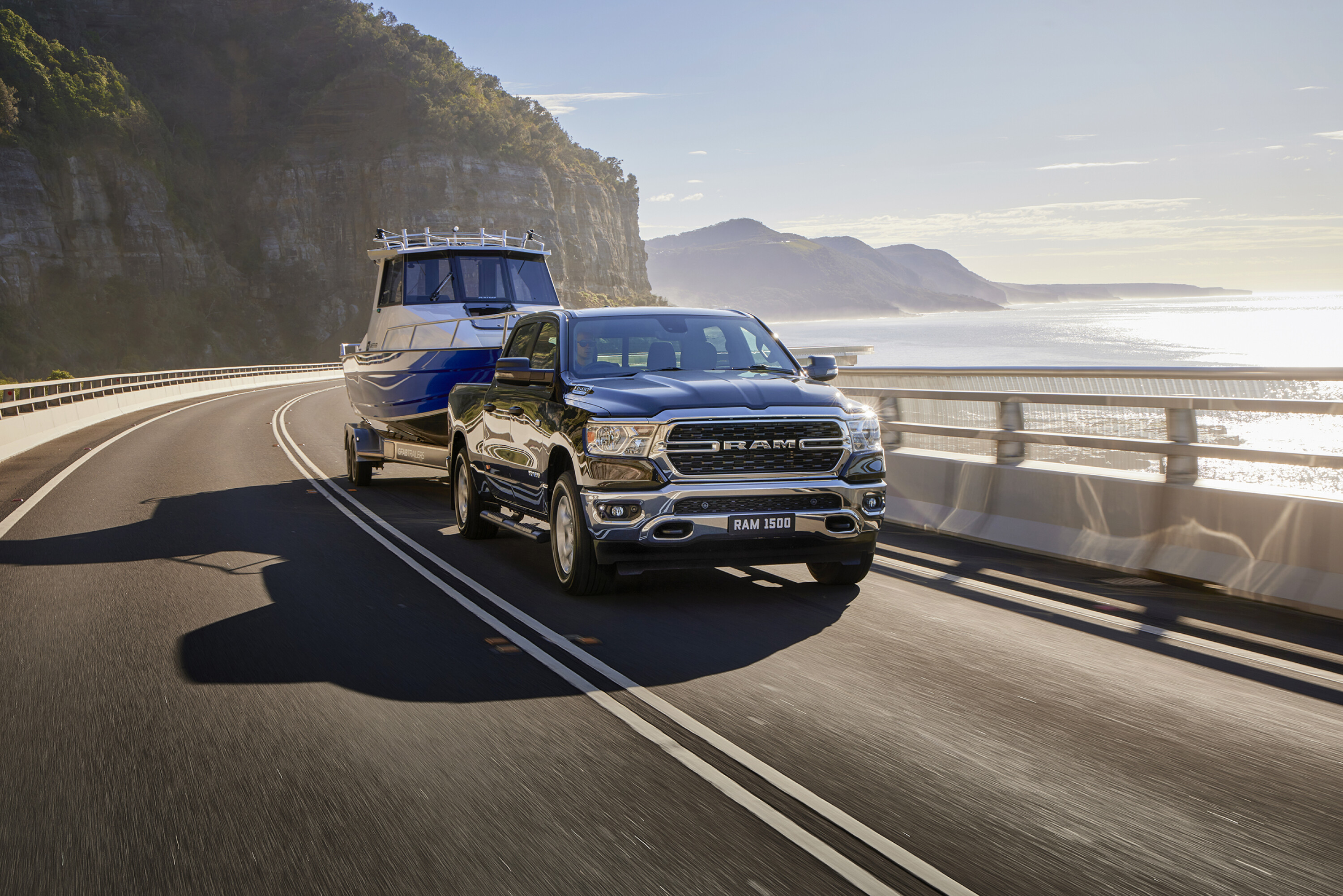
But in the Ram 1500 Big Horn, that usable payload figure jumps to 428kg. It means the Ram can take an extra passenger and more bags, or around 12 more cases of beer.
And shockingly, the usable payload in a Silverado ZR2 is just 68kg when you’re towing at its max capacity. That means that even with just the driver onboard, you’ll likely be overweight. However, the Silverado 1500 LTZ Premium has a much more usable 335kg, demonstrating the importance of paying attention to the difference a trim level choice can make.
You calculate payload by subtracting your vehicle’s kerb weight from its gross vehicle mass (GVM). GVM is the vehicle’s maximum operating weight according to the manufacturer, without a trailer, and it includes fluids, passengers, cargo and accessories like a bull bar or canopy.

This is how the maximum payload for a Ford F-150 XLT short wheelbase is calculated: 3220kg (GVM) – 2451kg (kerb weight) = 769kg (unladen payload).
But payload also includes the weight of any accessories like a bull bar, winch or roof rack and, crucially, you also have to factor in your trailer’s tow ball mass (TBM) when towing.
TBM is how much weight the trailer exerts on the tow bar and is usually around 10 per cent of the trailer’s total weight. So if you’re towing 4500kg, you’ll need to subtract 450kg from the payload figure.
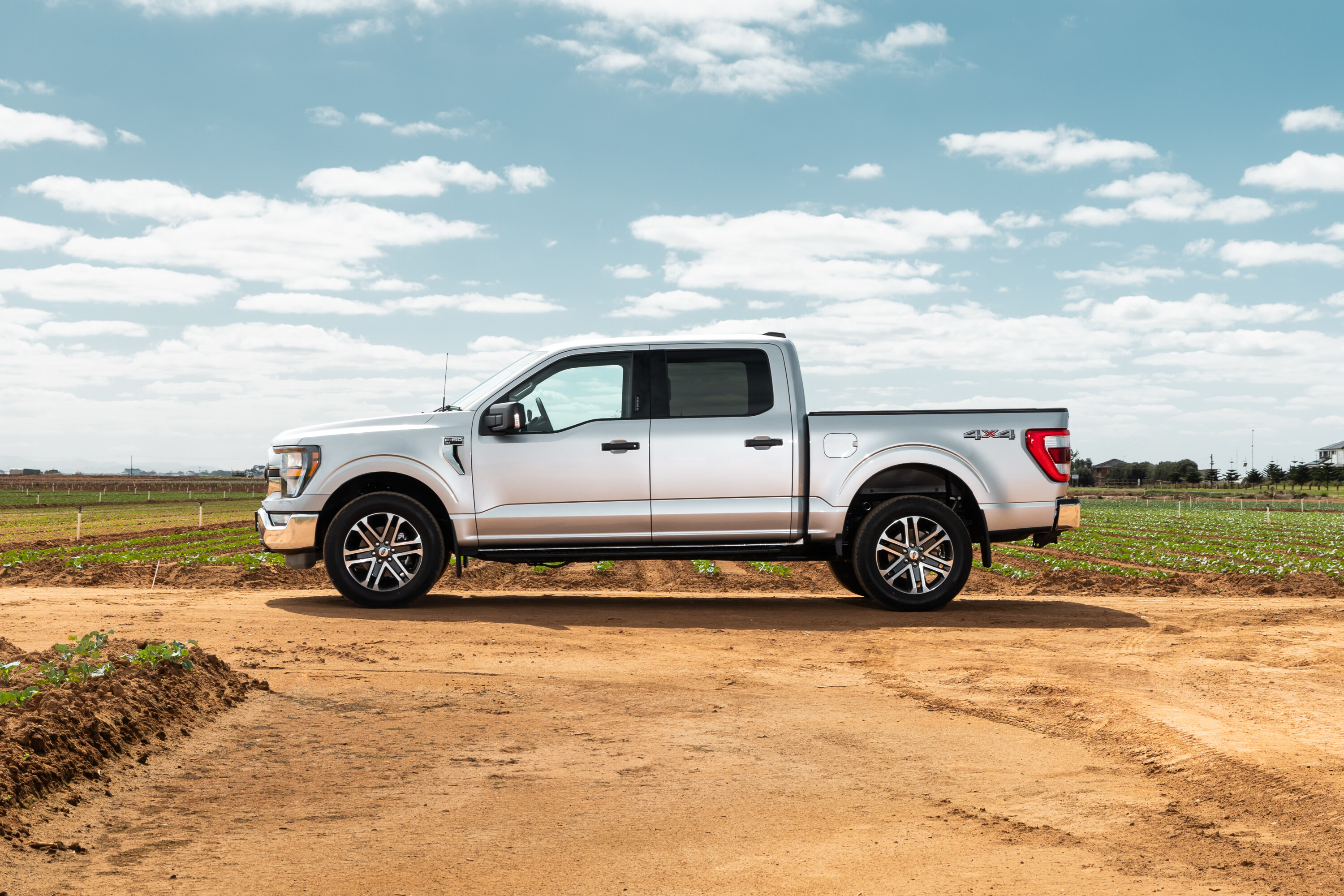
In the Ford F-150’s case, that means the sum suddenly looks like this: 3220kg (GVM) – 2451kg (Kerb) – 450kg (TBM) = 319kg (remaining payload).
Another way to calculate your ute’s towing payload is to subtract the kerb and trailer weights from the gross combined mass (GCM), which is the legal limit for your vehicle and trailer together.
An F-150 XLT’s GCM is 7720kg. So 7720kg (GCM) – 2451kg (kerb) – 4500kg (trailer weight) = 769kg.
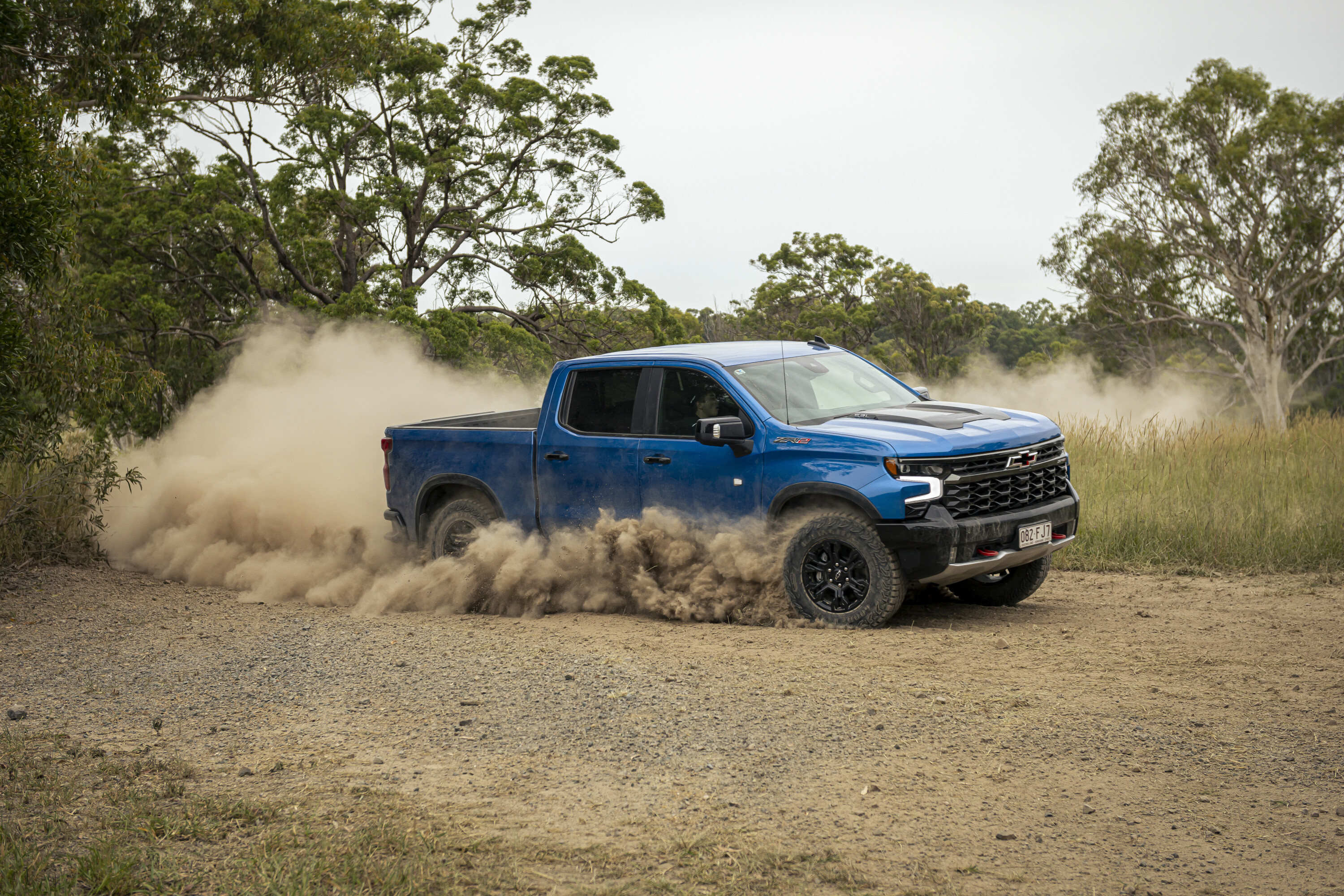
Your maximum towing payload is the smaller number produced by these two calculations. So in the F-150 XLT’s case, the remaining payload when towing 4500kg is 319kg.
Of course, these calculations don’t take into account any accessories you may have fitted to your vehicle or trailer/van, so be sure to take your setup over a weighbridge. It’s also a good idea to use a scale to determine exactly what weight your trailer exerts on the tow ball so you can distribute loads accordingly.
The trim level of your ute will also have different GCM/GVM and payload figures to other variants in the same model range. In the table below we’ve included the variants with the lowest and highest usable payload for each of our three contenders, our logic being that other versions of the same ute will sit in the middle somewhere.
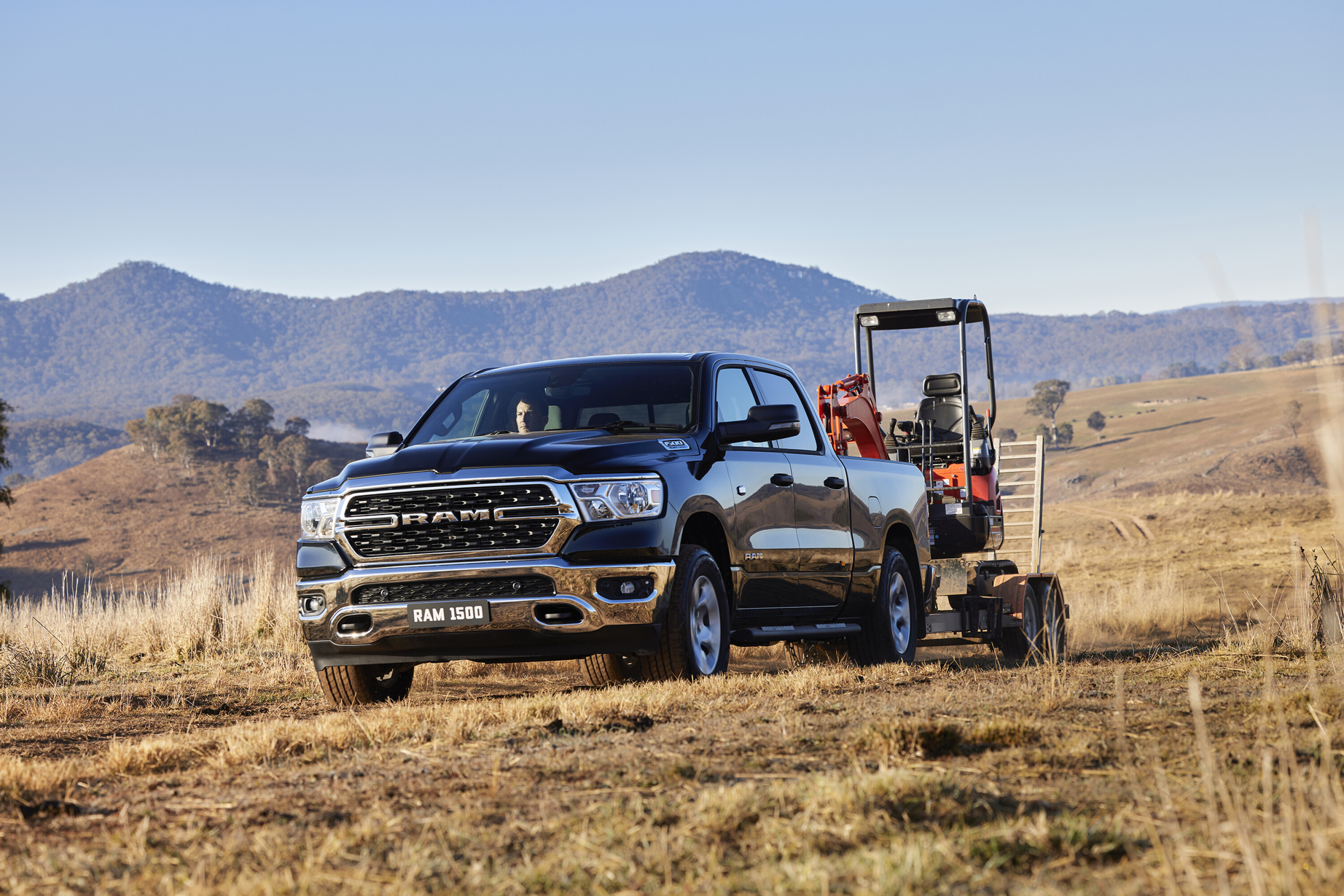
So what does all of this mean in the real world? Well as the below table shows there’s a big difference between our contenders.
The winner is the Ram 1500 Big Horn which has a usable payload of 428kg when towing 4500kg. That’s 200kg more than the Ford F-150 Lariat SWB (that’s a LOT of gear and beer) and a whopping 360kg more than the Chevrolet Silverado ZR2 which is left with a barely worthwhile 68kg usable payload.
The figures also highlight that when you’re towing 3000kg, every full-size US pick-up is trounced by a Ford Ranger XLT which costs half as much.
| Ford F-150 Lariat SWB | Ford F-150 XLT LWB | Ram 1500 Limited MY22 | Ram 1500 Big Horn | Chevrolet Silverado 1500 LTZ Premium | Chevrolet Silverado ZR2 | Ford Ranger XLT dual-cab | |
|---|---|---|---|---|---|---|---|
| Price | $139,950 | $107,945 | $156,950 | $120,950 | $121,000 | $124,000 | $65,190 |
| Braked tow rating | 4500kg | 4500kg | 4500kg | 4500kg | 4500kg | 4200kg | 3500kg |
| GVM | 3220kg | 3265kg | 3450kg | 3450kg | 3300kg | 3300kg | 3280kg |
| GCM | 7720kg | 7765kg | 7713kg | 7713kg | 7160kg | 6851kg | 6400kg |
| Kerb weight | 2535kg | 2471kg | 2749kg | 2572kg | 2543kg | 2583kg | 2233kg |
| Downball weight | 450kg | 450kg | 450kg | 450kg | 422kg | 400kg | 350kg |
| Unladen payload | 685kg | 794kg | 701kg | 878kg | 757kg | 717kg | 1047kg |
| Payload at max tow capacity | 235kg | 344kg | 251kg | 428kg | 335kg | 68kg | 667kg |
| Payload at 3000kg | 385kg | 494kg | 401kg | 578kg | 457kg | 417kg | 747kg |
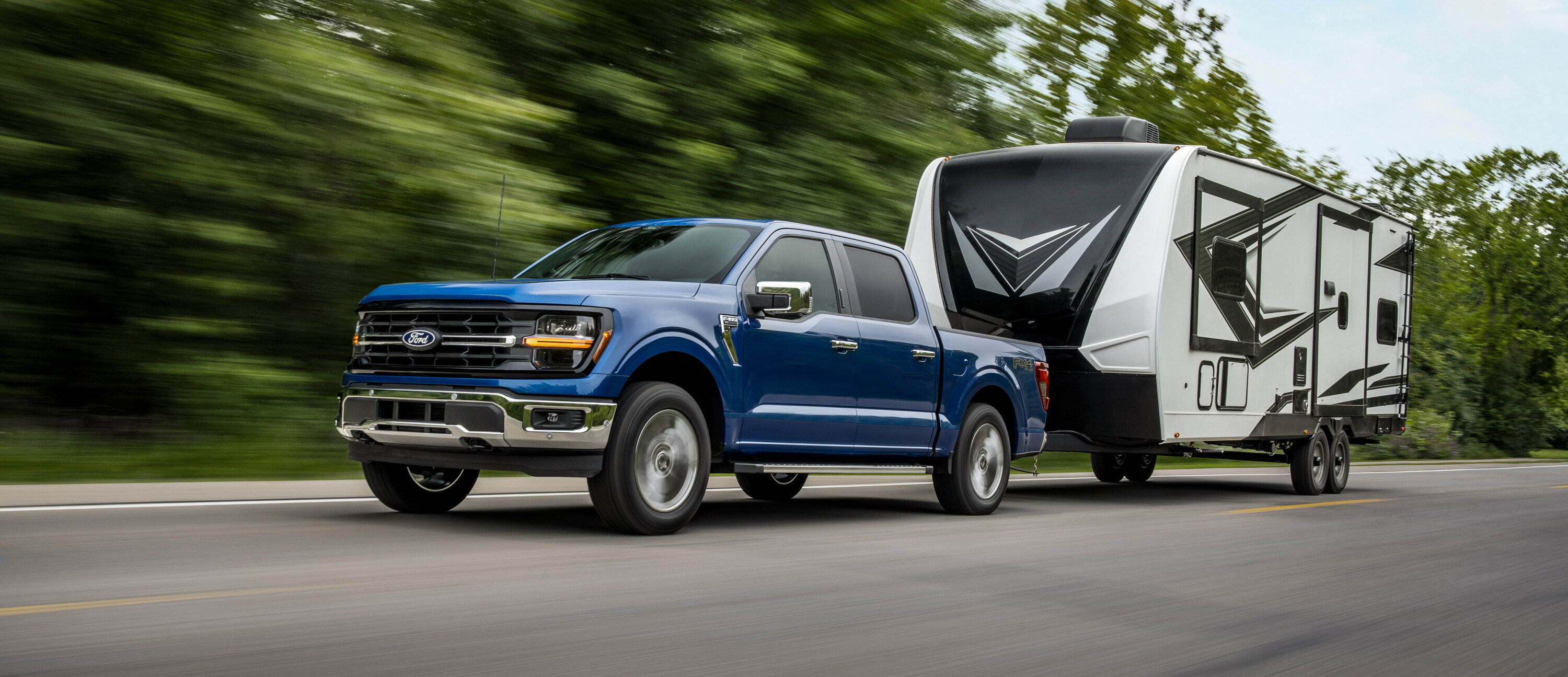
Cruising range
WINNER: Ford F-150
Covering large distances is another part of a big ute’s appeal and when it comes to cruising range the Ford F-150 is the clear winner.
That’s down to its large 136-litre fuel tank which easily gazumps the capacity available in the Ram 1500 (98L) and Chevrolet Silverado (91L). The MY23 Ram 1500 Express does have a 121L tank, however, which puts it close to the Ford.
Of this pack, only the Ford uses a twin-turbo V6 engine, its 3.5L EcoBoost unit consuming 12.5L/100km on the official combined cycle. That gives the F-150 a theoretical driving range of more than 1000km. Keep in mind that’s without a trailer or van hitched, however.
| Ford F-150 | Chevrolet Silverado LTZ | Ram 1500 Limited | Ram 1500 Express | |
|---|---|---|---|---|
| Engine | 3.5L V6TT | 6.2L V8 | 5.7L V8 | 5.7L V8 |
| Combined consumption | 12.5L/100km | 12.2L/100km | 12.2L/100km | 12.2L/100km |
| Tank size | 136L | 91L | 98L | 121L |
| Range | 1088km | 746km | 803km | 992km |


